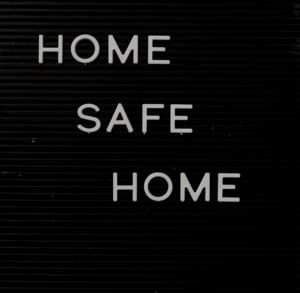We all get a little nervous waving off our child on their first day of school, leaving the house with our spouse to go on a date and leaving the kids with a new baby sitter, or putting the family pet in kennels while we travel out of town.
It is normal for us to be concerned about the health, safety, and well-being of those we love. For some people, however, they don’t just get a bit nervous in these situations – their anxiety is palpable and possibly overwhelming. If this is you, you may be suffering from Separation Anxiety Disorder, also known as SAD.
What is Separation Anxiety Disorder?
 Separation Anxiety Disorder (SAD) is when someone is excessively afraid of being separated from their attachment figures – a specific person, certain people, or even a pet – or their home.
Separation Anxiety Disorder (SAD) is when someone is excessively afraid of being separated from their attachment figures – a specific person, certain people, or even a pet – or their home.
Separation anxiety is a normal stage of development for infants and toddlers. While young children often experience a period of separation anxiety, most children outgrow separation anxiety by about 3 years of age.
Although many people associate separation anxiety with children, adults do experience this condition as well. Separation anxiety disorder can occur in teenagers and adults, causing significant problems with leaving home or going to work. About 1-2% of adults in the United States have Separation Anxiety Disorder, and the condition affects men and women more or less the same.
When an adult has SAD, they have a deep-seated and extreme fear that something bad is going to happen to the people that they love, such as family members and friends. As a result, they have difficulty concentrating when away from loved ones, and in relationships it can lead people to be overbearing partners, and overly involved or strict parents.
In some cases, a person who struggles with Separation Anxiety Disorder as an adult may have had the condition as a child. For others, they may only experience it first in adulthood.
Symptoms of Separation Anxiety Disorder
 Separation Anxiety Disorder has overlapping features with other types of anxiety disorder, including Agoraphobia, Generalized Anxiety Disorder and Panic Disorder. Due to these similarities, Separation Anxiety Disorder is often misdiagnosed and mistaken for other conditions.
Separation Anxiety Disorder has overlapping features with other types of anxiety disorder, including Agoraphobia, Generalized Anxiety Disorder and Panic Disorder. Due to these similarities, Separation Anxiety Disorder is often misdiagnosed and mistaken for other conditions.
Separation Anxiety Disorder, however, is when a person exhibits several of these common symptoms for longer than 6 months:
- deep and unusual distress at the thought of being separated from a person or pet
- worrying and being afraid of being alone
- persistent reluctance or refusal to be away from home or a loved one
- onset of physical symptoms when they know they may be separated from a person or pet soon
- difficulty sleeping when away from a loved one for fear that harm of some kind may come to them
- excessive worry that if they leave them alone, their loved one will be abducted or harmed
- constantly having a deep need to know where a loved one is
- having nightmares with themes of separation from loved ones
- depression or anxiety attacks because of the above
These symptoms may last for several months or more in adults, causing significant distress that can affect their work, social, or academic functioning.
Other physical symptoms associated with these periods of anxiety that a person may experience when separation is anticipated or has occurred include:
- headaches
- sore throat
- nausea
- diarrhea
SAD can be hard to detect because it can be masked using technology. Socially acceptable means of keeping in constant touch with loved ones such as texting, video calls or instant messaging can hide underlying separation anxiety – often the symptoms surface in cases where the ability to keep in touch is limited.
Diagnosis
Due to Separation Anxiety Disorder being often misdiagnosed and mistaken for other anxiety-related conditions, it is important to go to a health care professional for help. According to the Diagnostic and Statistical Manual of Mental Disorders (DSM-5), to be diagnosed with Separation Anxiety Disorder, the symptoms must continue for at least six months and have a negative impact on your work, social or academic functioning.
Your doctor or mental health professional will do a comprehensive examination and ask you (and possibly your family as well) a lot of questions to determine if you do have Separation Anxiety Disorder and not some other condition that better explains your symptoms.
Causes of Separation Anxiety Disorder
 What exactly causes Separation Anxiety Disorder in adults? Some adults that experience Separation Anxiety Disorder may have had the condition as children, and it persisted into adulthood. If they experienced a deep emotional loss that impacted them early in their lives, such as the loss of a parent or beloved family pet, or they experienced trauma such as sexual abuse or moving from their childhood home, this may trigger separation anxiety that carries over into adulthood.
What exactly causes Separation Anxiety Disorder in adults? Some adults that experience Separation Anxiety Disorder may have had the condition as children, and it persisted into adulthood. If they experienced a deep emotional loss that impacted them early in their lives, such as the loss of a parent or beloved family pet, or they experienced trauma such as sexual abuse or moving from their childhood home, this may trigger separation anxiety that carries over into adulthood.
However, SAD also affects people who do not have a history of juvenile separation anxiety.
For people who did not have separation anxiety as children, the following risk factors may contribute to the onset of adult Separation Anxiety Disorder:
- experiencing separation from loved ones through events such as a disaster
- having a family member who struggles with anxiety and anxiety-related conditions
- experiencing life stresses which trigger separation anxiety, such as the death of a loved one or a beloved pet, going through a divorce or moving to a new house or to college
It is important to remember that although these are risk factors that can make someone more likely to develop Separation Anxiety Disorder, having any of these does not mean someone will develop Separation Anxiety Disorder.
Treatment for SAD
 Separation Anxiety Disorder is a condition that won’t go away on its own with the passage of time. There are underlying patterns of thought and behavior that need to be deliberately addressed to bring the condition under control.
Separation Anxiety Disorder is a condition that won’t go away on its own with the passage of time. There are underlying patterns of thought and behavior that need to be deliberately addressed to bring the condition under control.
SAD must be attended to and treated with the help of a mental health professional. With the right help and support, most people with SAD can manage the condition. Thankfully, there are several treatment options that are effective to manage and help you live your life.
- Psychotherapy. One of the main ways that mental health professionals help their patients with separation anxiety and Separation Anxiety Disorder is psychotherapy. Cognitive Behavioral Therapy (CBT) helps you identify the behavior and thought patterns that aggravate separation anxiety and start moving these toward a more positive and life-giving direction. Other forms of therapy that may be helpful include family therapy to develop a better understanding of the family dynamics and how they can be a help or a hindrance to effective handling of separation anxiety
- Support Groups. In addition to individual and family therapy, group therapy helps individuals connect with others that are similarly dealing with Separation Anxiety Disorder
- Medication. In the short-term, your doctor can prescribe anti-anxiety medication to assist in keeping the more acute symptoms and debilitating effects of separation anxiety at bay. This is not a long-term solution, but something to help you on your journey.
Getting the Help You Need
Jesus Christ came that we may have life and have it to the full (John 10:10). Living in fear undermines our joy and our quality of life, and that is not what God wants for us. If you suspect that you or a loved one has Separation Anxiety Disorder, don’t suffer in silence – talk to a health care professional about it to get the help you need.
Beyond the possible medications that may be prescribed to help in the short term, seeing a trained professional can help a person with SAD. They can, for instance, help them to develop strategies to internalize the emotional support provided them by others, for example being able to better process distressing emotions or learning to self-soothe.
A Christian health care professional can help you not only with developing these life-giving strategies and changing unhelpful thought and behavior patterns but also with reminding you of biblical truths to sustain your journey.
“Left Out”, Courtesy of Katherine Chase, Unsplash.com, CC0 License; “Home Safe Home”, Courtesy of James Lee, Unsplash.com, CC0 License; “A Man’s Best Friend”, Courtesy of Eric Ward, Unsplash.com, CC0 License; “Praying”, Courtesy of Priscilla Du Preez, Unsplash.com, CC0 License

